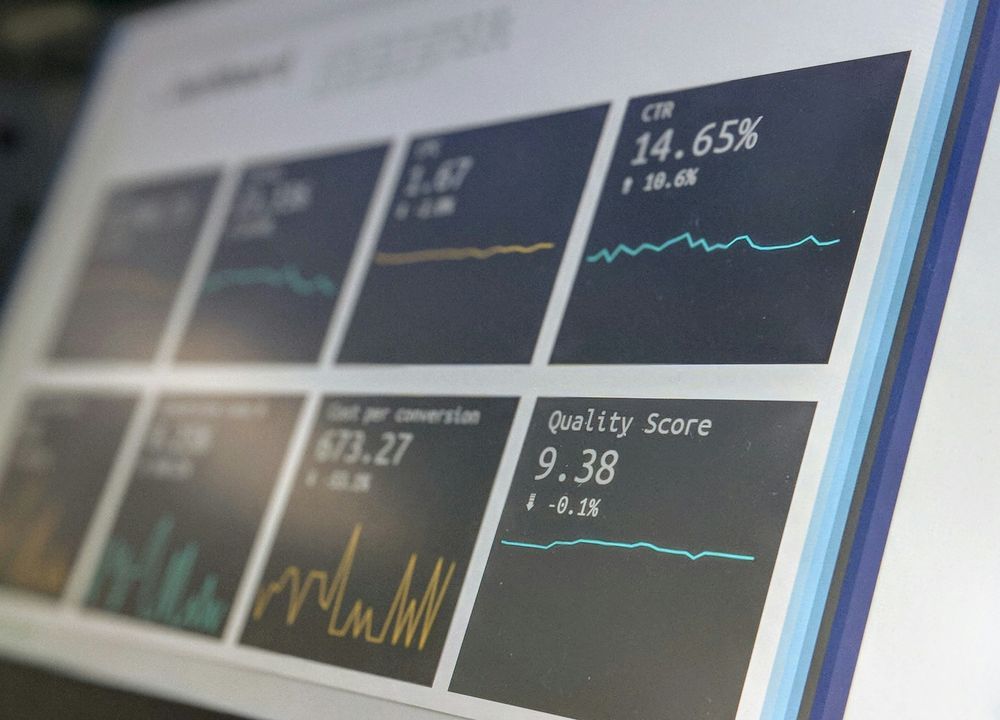Ad Verification and Analysis
Dive into the world of ad verification and analysis, exploring how advanced cloud browser technology enhances campaign integrity. Learn about the challenges faced by marketers and the innovative solutions that drive accurate, scalable ad performance tracking.

The Critical Role of Ad Verification in Digital Marketing
In the fast-paced world of digital advertising, ensuring the integrity and effectiveness of your campaigns is more crucial than ever. Ad verification has become a cornerstone of successful marketing strategies, allowing businesses to confirm that their ads are displayed correctly, reach the intended audience, and deliver the expected return on investment. As we navigate the complex landscape of online advertising in 2024, the need for reliable ad verification methods has skyrocketed.
With the surge in programmatic advertising and the ever-evolving tactics of fraudsters, marketers face unprecedented challenges in maintaining the quality and performance of their ad campaigns. Traditional verification methods often fall short, struggling to keep pace with sophisticated ad fraud techniques and the sheer volume of digital advertisements. This is where cutting-edge solutions like cloud browsers come into play, revolutionizing the way we approach ad verification and analysis.
The stakes are high in the digital advertising arena. Inaccurate or fraudulent ad placements can lead to wasted budgets, damaged brand reputation, and missed opportunities to connect with potential customers. By leveraging advanced technologies for ad verification, businesses can safeguard their investments and ensure that every advertising dollar is working towards achieving their marketing goals. Let's delve deeper into the world of ad verification and explore how modern solutions are transforming this critical aspect of digital marketing.
Understanding Ad Verification: Process and Importance
Ad verification is a comprehensive process that involves monitoring, analyzing, and confirming the proper delivery and performance of digital advertisements. It encompasses several key aspects, including viewability, brand safety, fraud detection, and geographical targeting. The primary goal is to ensure that ads are served to real humans, in the right context, and in the intended locations.
Here's a breakdown of the main components of ad verification:
- Viewability: Ensuring ads are actually seen by users, not hidden or displayed in non-viewable areas of a webpage.
- Brand Safety: Verifying that ads appear in contexts that align with the brand's values and don't damage its reputation.
- Fraud Detection: Identifying and preventing non-human traffic, click farms, and other fraudulent activities that artificially inflate ad metrics.
- Geo-targeting: Confirming that ads reach the intended geographical audience as specified in the campaign parameters.
The importance of ad verification cannot be overstated in today's digital ecosystem. With the rise of programmatic advertising, where ads are bought and sold in real-time auctions, the potential for discrepancies and fraud has increased dramatically. Accurate verification ensures that advertisers get what they pay for and helps maintain trust in the digital advertising ecosystem.
Moreover, ad verification plays a crucial role in optimizing campaign performance. By providing insights into how and where ads are displayed, it allows marketers to make data-driven decisions to improve targeting, adjust bidding strategies, and enhance overall campaign effectiveness. This level of transparency and control is essential for maximizing return on ad spend (ROAS) and achieving marketing objectives in an increasingly competitive digital landscape.

Why Cloud Browsers are Essential for Modern Ad Verification
In the rapidly evolving world of digital advertising, traditional methods of ad verification are struggling to keep up with the sophistication of both ad delivery systems and fraudulent activities. This is where cloud browsers, like Rebrowser, come into play, offering a game-changing solution for advertisers and verification specialists alike.
Cloud browsers provide a unique advantage in ad verification by allowing users to access and interact with web content from remote servers. This approach offers several key benefits:
- Undetectable Browsing: Cloud browsers mask the verification process, making it indistinguishable from regular user activity. This prevents websites from altering their behavior when they detect verification attempts.
- Geographical Accuracy: With servers located in various regions, cloud browsers can accurately simulate user locations, ensuring geo-targeting verification is precise and reliable.
- Scalability: Cloud-based solutions can easily scale to handle large volumes of verification tasks simultaneously, something that's challenging with traditional local browser setups.
- Consistent Environment: Cloud browsers provide a controlled, consistent environment for verification, eliminating variables that could affect results on local machines.
Rebrowser, as a cutting-edge cloud browser service, takes these advantages even further. Its use of real devices with unique fingerprints makes it virtually impossible for websites to distinguish between verification processes and genuine user interactions. This level of authenticity is crucial for accurate ad verification, as it ensures that the ads are being served and displayed exactly as they would be to real users.
Furthermore, the ability to integrate seamlessly with existing automation scripts makes Rebrowser an ideal choice for ad verification teams looking to upgrade their capabilities without overhauling their entire workflow. The service's support for multiple account management and real-time session observation also enhances the efficiency and effectiveness of verification processes, allowing for more comprehensive and accurate analysis of ad performance across various platforms and scenarios.
Comparing Ad Verification Methods: Traditional vs. Cloud-Based
To truly appreciate the impact of cloud browsers on ad verification, it's essential to compare them with traditional methods. Let's break down the key differences:
| Aspect | Traditional Methods | Cloud-Based Solutions (e.g., Rebrowser) |
|---|---|---|
| Detection by Websites | Easily detected as non-human traffic | Undetectable, mimics real user behavior |
| Geographical Accuracy | Limited by physical location or VPN quality | Precise simulation of various locations |
| Scalability | Limited by local hardware resources | Highly scalable, can handle multiple verifications simultaneously |
| Consistency | Varies based on local machine setup | Consistent environment across all verifications |
| Speed | Can be slow, especially for large-scale operations | Fast, leveraging cloud infrastructure |
| Cost Efficiency | High maintenance and hardware costs | Pay-as-you-go model, no hardware investment |
| Fraud Detection | Limited ability to detect sophisticated fraud | Advanced detection capabilities using AI and machine learning |
The advantages of cloud-based solutions like Rebrowser are clear. They offer a level of accuracy, scalability, and efficiency that traditional methods simply can't match. This is particularly crucial in the fast-paced world of digital advertising, where real-time data and quick responses can make or break a campaign.
Moreover, the undetectable nature of cloud browsers ensures that the verification process doesn't inadvertently skew the results. Websites often change their behavior when they detect bot activity, which can lead to inaccurate verification results. By using a service like Rebrowser, ad verification teams can get a true picture of how ads are being served and displayed in the wild, leading to more accurate reporting and better-informed decision-making.

Implementing Rebrowser for Effective Ad Verification
Integrating Rebrowser into your ad verification workflow is a straightforward process that can significantly enhance the accuracy and efficiency of your campaigns. Here's a step-by-step guide to getting started:
- Set Up Your Rebrowser Account: Begin by creating an account and familiarizing yourself with the dashboard. This is where you'll manage your virtual browsers and access key features.
- Configure Your Verification Scripts: If you're already using Puppeteer or Playwright for automation, you'll find that Rebrowser integrates seamlessly. Adapt your existing scripts to work with Rebrowser's cloud environment, which typically requires minimal changes.
- Define Your Verification Parameters: Specify the ads you want to verify, target locations, and other relevant criteria within your scripts or through Rebrowser's interface.
- Launch Verification Sessions: Use Rebrowser to spin up multiple cloud browser instances, each mimicking a real user from your target demographic and location.
- Monitor and Analyze: Take advantage of Rebrowser's real-time observation feature to watch the verification process unfold. Collect data on ad placements, viewability, and potential fraud indicators.
- Generate Reports: Compile the gathered data into comprehensive reports that provide insights into your ad campaign's performance and any issues detected.
One of the key advantages of using Rebrowser for ad verification is its ability to scale effortlessly. You can run verifications across hundreds of virtual devices simultaneously, allowing for a more comprehensive analysis of your ad campaigns. This scalability is particularly valuable for large-scale campaigns or when quick turnaround times are essential.
Furthermore, Rebrowser's AI-assisted CAPTCHA solving and seamless proxy integration ensure that your verification processes can navigate even the most challenging website security measures. This means you can verify ads on platforms that might be difficult or impossible to access with traditional methods, giving you a more complete picture of your ad performance across the entire digital landscape.
Potential Challenges and Solutions in Cloud-Based Ad Verification
While cloud browsers like Rebrowser offer significant advantages for ad verification, it's important to be aware of potential challenges and how to address them effectively. Here are some common issues and their solutions:
1. Learning Curve
Challenge: Teams accustomed to traditional verification methods may need time to adapt to cloud-based solutions.
Solution: Rebrowser provides comprehensive documentation and support to ease the transition. Invest in training sessions for your team to ensure they can fully leverage the platform's capabilities.
2. Data Privacy Concerns
Challenge: Handling sensitive campaign data in the cloud may raise privacy concerns.
Solution: Rebrowser employs robust security measures, including end-to-end encryption and strict data handling protocols. Familiarize yourself with these features and communicate them to stakeholders to alleviate concerns.
3. Integration with Existing Systems
Challenge: Incorporating a new tool into established workflows can be disruptive.
Solution: Rebrowser's flexible API and compatibility with popular automation frameworks like Puppeteer and Playwright make integration smoother. Start with small-scale pilot projects to iron out any integration issues before full deployment.
4. Handling Dynamic Content
Challenge: Modern ads often involve dynamic, interactive content that can be challenging to verify.
Solution: Utilize Rebrowser's real device capabilities and persistent profiles to interact with dynamic content as a real user would. This ensures accurate verification of even the most complex ad formats.
By anticipating these challenges and leveraging Rebrowser's features to address them, you can ensure a smooth transition to cloud-based ad verification. The key is to approach the implementation methodically, taking advantage of the platform's flexibility and support resources to overcome any hurdles you may encounter.

Scaling Ad Verification: Maximizing Efficiency with Cloud Browsers
One of the most significant advantages of using cloud browsers for ad verification is the ability to scale operations efficiently. Traditional methods often hit a wall when it comes to handling large volumes of verification tasks, but solutions like Rebrowser are designed to overcome these limitations. Let's explore how cloud browsers enable scalable ad verification and the benefits this brings to digital marketers and agencies.
Unlimited Virtual Devices
With Rebrowser, you're not constrained by physical hardware limitations. You can spin up hundreds or even thousands of virtual devices simultaneously, each with its unique fingerprint and characteristics. This allows for comprehensive verification across a wide range of scenarios, device types, and geographical locations without the need for massive infrastructure investments.
Parallel Processing
Cloud browsers leverage the power of distributed computing to process multiple verification tasks in parallel. This drastically reduces the time required to complete large-scale verification projects. What might take days or weeks with traditional methods can often be accomplished in hours using Rebrowser's cloud infrastructure.
Dynamic Resource Allocation
Rebrowser's cloud-based approach allows for dynamic allocation of resources based on your verification needs. During peak periods, you can easily scale up your operations without worrying about hardware constraints. Conversely, you can scale down during quieter periods, ensuring cost-efficiency.
The scalability offered by cloud browsers like Rebrowser opens up new possibilities for ad verification:
- Comprehensive Campaign Analysis: Verify ads across numerous websites, ad networks, and geographical locations simultaneously.
- Real-Time Monitoring: Conduct ongoing verification at scale, allowing for quick detection and response to issues as they arise.
- A/B Testing at Scale: Easily compare the performance of different ad variations across diverse audience segments.
- Fraud Pattern Detection: Analyze vast amounts of data to identify sophisticated fraud patterns that might be missed with smaller sample sizes.
By leveraging the scalability of cloud browsers, advertisers and verification specialists can achieve a level of thoroughness and efficiency that was previously unattainable. This not only improves the accuracy of ad verification but also enables more agile and data-driven decision-making in campaign management.
Frequently Asked Questions
Q: How does Rebrowser ensure the authenticity of ad verification results?
Rebrowser uses real devices with unique fingerprints, making it impossible for websites to distinguish between verification processes and genuine user interactions. This ensures that the ads are displayed and behave exactly as they would for real users, providing authentic and accurate verification results.
Additionally, Rebrowser's cloud-based infrastructure allows for precise geographical targeting, ensuring that ads are verified from the correct locations as specified in your campaign parameters.
Q: Can Rebrowser integrate with my existing ad verification tools and workflows?
Yes, Rebrowser is designed to integrate seamlessly with popular automation frameworks like Puppeteer and Playwright. This means you can adapt your existing verification scripts with minimal changes, allowing for a smooth transition to cloud-based verification.
The platform also offers APIs and supports various programming languages, making it flexible enough to fit into most existing workflows and tool ecosystems.
Q: How does Rebrowser handle privacy and data security in ad verification?
Rebrowser takes data security very seriously. All browsing sessions are isolated and run on secure, remote servers. Data transmission is encrypted end-to-end, and strict protocols are in place to ensure that sensitive campaign information remains confidential.
Moreover, Rebrowser's cloud infrastructure is compliant with industry-standard security practices, providing a secure environment for your ad verification activities.
Q: What kind of support does Rebrowser offer for ad verification users?
Rebrowser provides comprehensive support for users engaged in ad verification. This includes detailed documentation, tutorials, and direct customer support channels. The platform also offers AI-assisted insights and tips through its dashboard, helping users optimize their verification processes and improve overall efficiency.
For enterprise users, Rebrowser can provide dedicated support and customized solutions to meet specific ad verification needs.
Q: Can Rebrowser handle verification of dynamic and interactive ad content?
Absolutely. Rebrowser's use of real devices and persistent profiles allows it to interact with dynamic and interactive ad content just as a real user would. This capability extends to rich media ads, video ads, and other complex ad formats.
The platform's ability to observe remote sessions in real-time also allows verification specialists to manually interact with ad content when necessary, ensuring comprehensive verification of even the most sophisticated ad experiences.
References:
- Interactive Advertising Bureau (IAB). (2023). "Ad Verification Guidelines."
- Boerman, S. C., Kruikemeier, S., & Zuiderveen Borgesius, F. J. (2017). "Online Behavioral Advertising: A Literature Review and Research Agenda." Journal of Advertising, Vol. 46(3), P. 363-376.
- World Federation of Advertisers (WFA). (2022). "Global Media Charter."
- Bashir, M. A., Arshad, S., Kirda, E., Robertson, W., & Wilson, C. (2019). "A Longitudinal Analysis of the ads.txt Standard." Proceedings of the Internet Measurement Conference, P. 294-307.
- Vratonjic, N., Manshaei, M. H., Grossklags, J., & Hubaux, J. P. (2013). "Ad-blocking Games: Monetizing Online Content Under the Threat of Ad Avoidance." In The Economics of Information Security and Privacy (P. 49-73). Springer, Berlin, Heidelberg.


